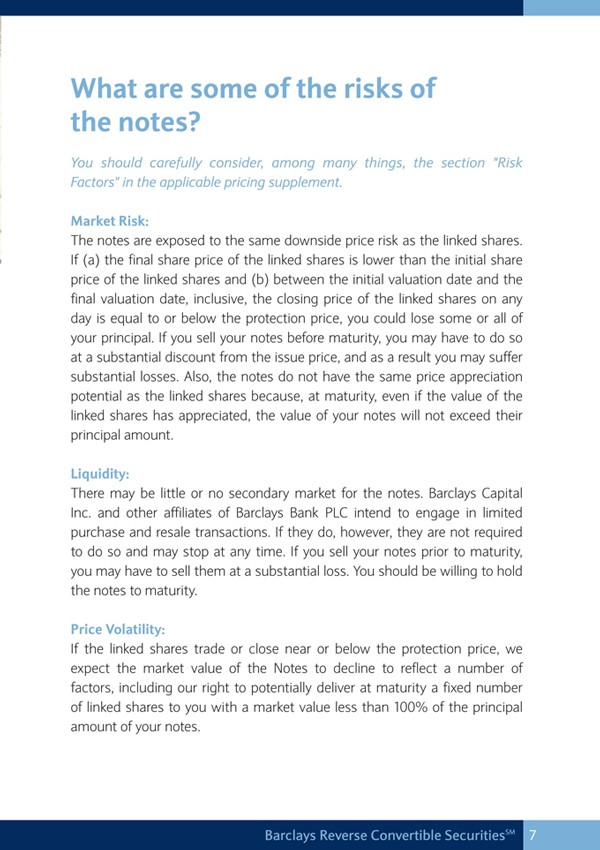What is a Reverse Convertible
Post on: 10 Апрель, 2015 No Comment

As a personal finance aficionado for many years, I was surprised to know little about reverse convertibles, an investment vehicle that sounds too good to be true. After reading this warning in Smart Money (and this one from FINRA ) about reverse convertibles, and how they did very poorly these last few years because of the economic downturn, I thought I should know more about them, despite having no desire to ever invest in one.
I think its always good to be educated, even on things you probably will never use because it helps you understand the environment as a whole.
Reverse Convertible Security
A reverse convertible security is a short term note, usually one year, that linked is to a stock and has a high coupon rate. When the note matures, you get the par value of the note if the stock has appreciated or held steady. If the stock price has fallen below the knock in level, you may receive a predetermined number of shares in the stock instead of cash. The maximum you can earn from the investment is the sum total of all the coupon payments. The most you can lose is the entire notes value minutes the coupon payments.
If you want a more technical explanation, there are two parts to the reverse convertible security a debt instrument and an underlying put option derivative. The debt instrument is the bond-like portion, the one that has a par value and pays a high coupon rate. There is also a derivative (put option) that gives the issuer the right to pay you back in the underlying asset if it dips below a knock-in level (usually around 70-80%).
What Can Happen?

Whats the risk? Theres plenty of risk wrapped up in the reverse convertible and its easy to miss them all when you see a nice fat coupon yield that youre guaranteed. The two really bad outcomes is if the stock price increases or decreases a lot. If it increases, you dont get any of that appreciation. If it decreases a lot, you bear the brunt of the loss. The FINRA warning does a great job explaining five scenarios as well as the upsides and downsides (the downside list is much longer).
I personally dislike the instrument because its complicated. Its a bond and a stock (technically a derivative of a stock), which makes it difficult to fit into an asset allocation. If I want a bond, Ill buy a bond. If I want a particular stock, Ill buy the stock. I dont see a need, for me personally, to go the route of a reversible convertible security to get both in one.
Im eager to hear what you all think about this instrument, especially the options guys out there!














